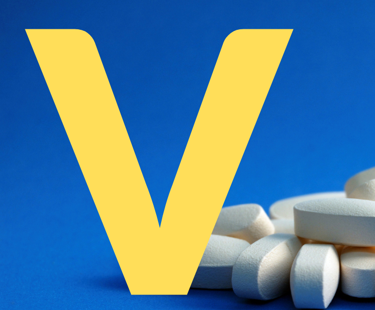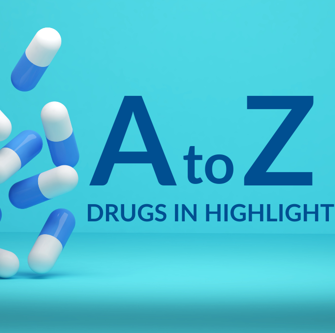Welcome to “A to Z: Drugs in Highlight
This series is designed to delve into the intricate realm of pharmaceutical drugs. As the world of pharmaceuticals continues to evolve with new discoveries and emerging challenges, we aim to shed light on the diverse array of medications available today, ranging from blockbuster medications to those that may not be as familiar. Whether you’re a healthcare professional, a student, or simply someone with a curious mind, “A to Z: Drugs in Highlight” promises to be an enlightening and engaging series.
V is for VENCLEXTA®
VENCLEXTA® (from AbbVie), also sold under the brand name VENCLYXTO®, is used to treat chronic lymphocytic leukaemia and acute myeloid leukaemia.
How it works:
Leukaemia is a cancer of the white blood cells. It can be classified based on the disease’s progression (acute or chronic) and the type of white blood cell affected (myeloid or lymphoid). The most common types of leukaemia in adults are acute myeloid leukaemia (AML) and chronic lymphocytic leukaemia (CLL). AML is an acute leukaemia that progresses rapidly and affects myeloid cells, whereas CLL is a slow-growing, chronic leukaemia that affects B-lymphocytes.
B-cell lymphoma 2 (BCL-2) is a protein that prevents apoptosis (programmed cell death) by binding to pro-apoptotic proteins, keeping them inactive. BCL-2 is overexpressed in leukaemia cells, allowing these cells to evade apoptosis and survive longer. VENCLEXTA® contains the active ingredient venetoclax. Venetoclax selectively binds to BCL-2, displacing pro-apoptotic proteins and triggering events that lead to apoptosis of leukaemia cells.

For AML, VENCLEXTA® is used in combination with either azacitidine or decitabinein. Both azacitidine and decitabinein are cytosine analogs that covalently trap DNA methyltransferases.
For CLL, VENCLEXTA® can be used alone or in combination with immunotherapy medicines such as obinutuzumab and rituximab.
VENCLEXTA® is prescribed as a tablet (10 mg, 50 mg and 100 mg) to be taken by mouth once a day.
Market impact:
VENCLEXTA® is approved for marketing in the United States (approved by the FDA in April 2016) and in Europe (approved by the EMA in December 2016).
In 2024, global VENCLEXTA® net revenue was USD 655 million.
Patent protection:
There are patent rights protecting various aspects of VENCLEXTA® in the United States and Europe.
For example, US8546399 protects several apoptosis-inducing compounds, including 4-(4-{[2-(4-chlorophenyl)-4,4-dimethylcyclohex-1-en-1-yl]methyl}piperazin-1-yl)-N-({3-nitro-4-[(tetrahydro-2H-pyran-4-ylmethyl)amino]phenyl}sulfonyl)-2-(1H-pyrrolo[2,3-b]pyridin-5-yloxy)benzamide (also known as venetoclax). Venetoclax does not appear to be claimed in the corresponding European patent.
EP2613769 relates to a solid dispersion comprising, in essentially non-crystalline form such that no more than about 5% crystallinity is observed by X-ray diffraction analysis, a compound of Formula I

where: R0 is chloro; R1 and R2 are H; R3 and R4 are methyl; A1 is N and A2 is CH; R5 is nitro; X is -NH-; Y is -(CH2)n- where n is 1; and R6 is selected from the group consisting of tetrahydropyranyl and 4-hydroxy-4-methylcyclohexyl; or a pharmaceutically acceptable salt thereof;
wherein the compound of Formula I or the pharmaceutically acceptable salt thereof is dispersed in a solid matrix that comprises (a) at least one pharmaceutically acceptable water-soluble polymeric carrier and (b) at least one pharmaceutically acceptable surfactant;
wherein the compound or pharmaceutically acceptable salt thereof is present in a parent compound-equivalent amount of about 5% to about 15% by weight, the at least one pharmaceutically acceptable water-soluble polymeric carrier is present in an amount of about 70% to about 85% by weight, and the at least one pharmaceutically acceptable surfactant is present in an amount of about 5% to about 15% by weight.
Patent support from Secerna
Our team has a wealth of experience gained from working with world leaders in the chemistry and pharmaceutical disciplines encompassing new chemical entities, materials science, agricultural chemistry, chemical processes and formulation technology. We have also worked extensively in the medical device materials and carbon nanotechnology sectors.
For intellectual property advice relating to your next project, please get in touch. Our team will be happy to assist. Contact us here.


